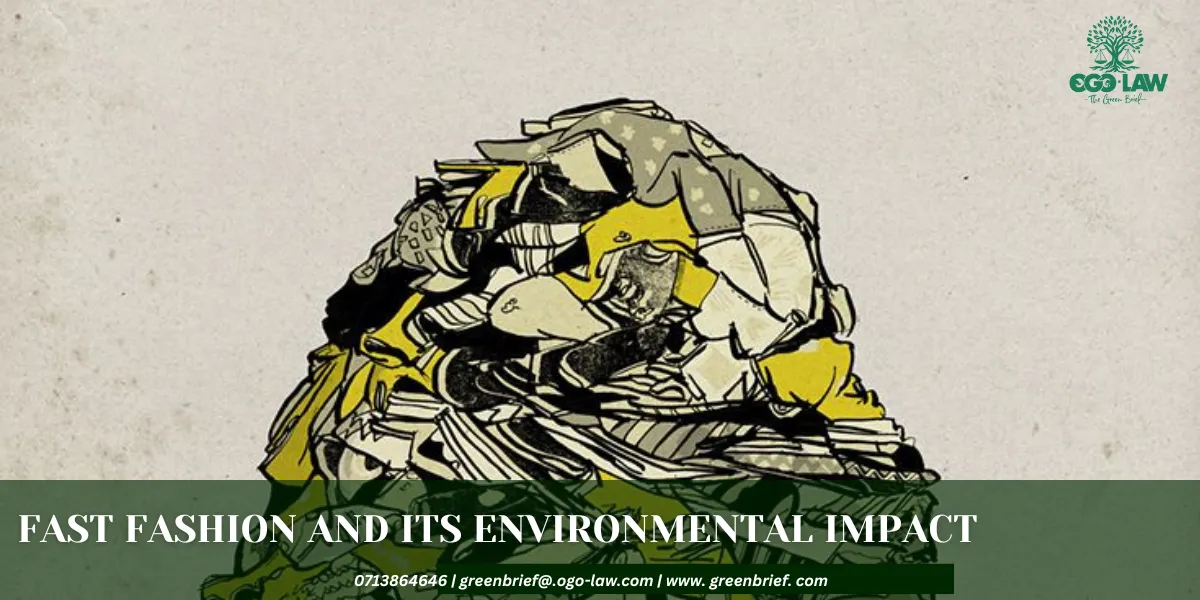Second hand clothing trade or as it is commonly referred to in Kenya as “Mitumba” continues to be a common practice across Africa. Despite government efforts to ban these clothing, it has been met by much resistance as the ban remains a politically sensitive issue. While the government may not directly discuss its environmental impact, their argument is centered on protecting the textile industry by making local clothes more competitive and affordable.
So what’s the whole debate around fast fashion and its impact on the environment?
Fast fashion refers to the rapid mass production of cheap, trendy clothing designed to maximize on current trends. The emphasis is on speed and low costs meaning the clothing is more often than not of lower quality and designed for short term use. Once the use of the clothing is done, Majority of these clothes are exported to Africa as “Second-hand clothing,” making Africa the final destination for fast fashion.
Globally, the fashion industry is valued at approximately 1.84 trillion dollars with Kenya’s market accounting for 6.19 billion dollars as of 2025. According to the United Nations Environment Programme (UNEP), this industry is the second biggest consumer of water after Agriculture. It is also responsible for approximately 10 per cent of global carbon emissions which is more than all international flights and maritime shipping combined. The hidden environmental cost of fast fashion is as follows:-
1. Water waste . According to UNEP it takes around 7,500 litres of water to make a single pair of jeans and approximately 2,500 litres of water to make a single cotton shirt. This is equivalent to the amount of water an average person drinks in over a period of seven years. To put it in a wider context, United Nations Trade and Development (UNCTAD) estimated that the fashion industry uses approximately 93 billion cubic meters of water which is enough to meet the needs of 5 million people annually.
This means that considering fast fashion is dependent on trends and consumers on the other hand, quickly dump clothes when a new trend surfaces, fast fashion industries will continue the cycle of mass producing low quality, cheap, trendy clothes hence exacerbating the overconsumption of water resources thus leading to long term effects of water reduction which is already a scarce resource.
2. Textile water pollution – The link between textile waste disposal and water pollution cannot be denied. For instance, in Kenya, Nairobi River is an example of a water source that continues to be polluted by fashion waste owing to its proximate location to Gikomba, a market where second hand clothing trade takes place. Further, when clothes containing toxic elements are washed and the water is dumped into the sewer system and the same is not properly treated, this is likely to cause contamination of water sources.
3. Carbon footprint – Other than water pollution, textile waste that finds itself in landfills especially in urban centers, takes decades, if not years, to decompose which consequently leads to greenhouse gas emissions. One example of such a landfill in Kenya is the Dandora dumpsite. Globally, greenhouse gas emissions as a result of dumped second hand clothing has been estimated to be approximately 10 per cent.
4. Plastic Pollution – Second hand clothing is majorly made up of synthetic fibres made from plastics including nylon and polyester. These clothes when washed or worn are likely to shed the microplastics such as polyester which are difficult to recycle.
Therefore, while second hand clothing provides affordable clothing and decent economic livelihoods for millions, it continues to drive unsustainable consumption and environmental degradation. So the next time you want to buy any clothing, remember to support sustainable fashion in order to minimize environmental impacts for the present and future generations.





